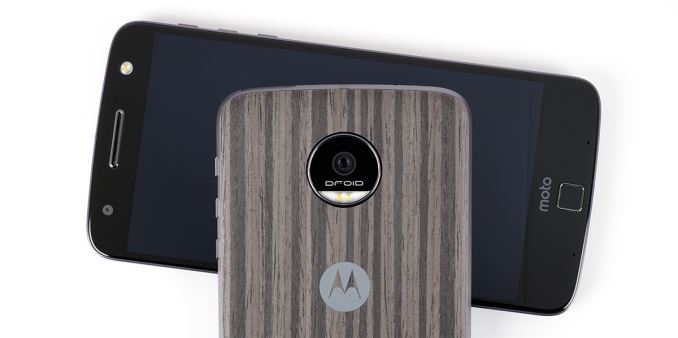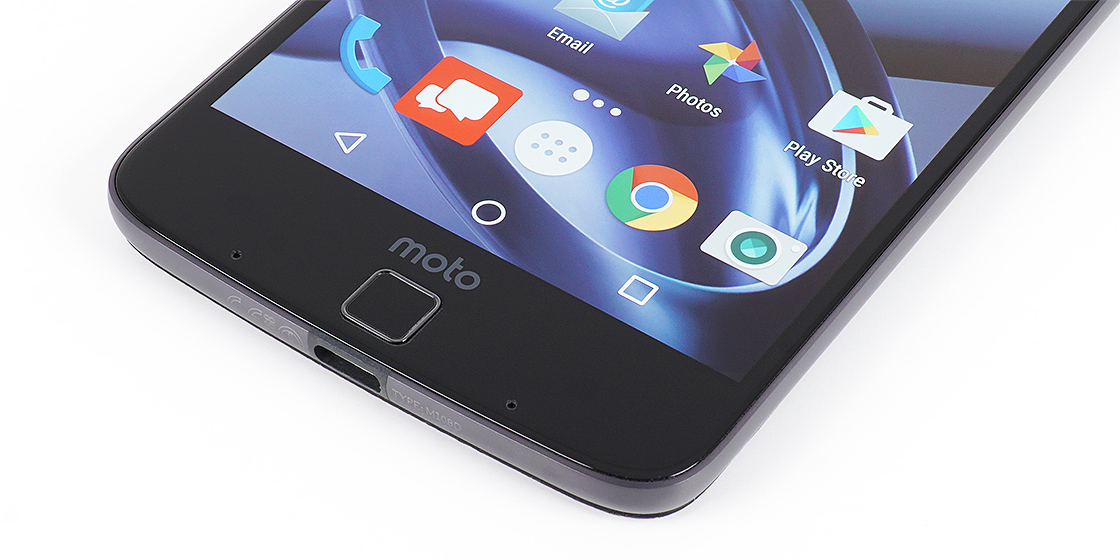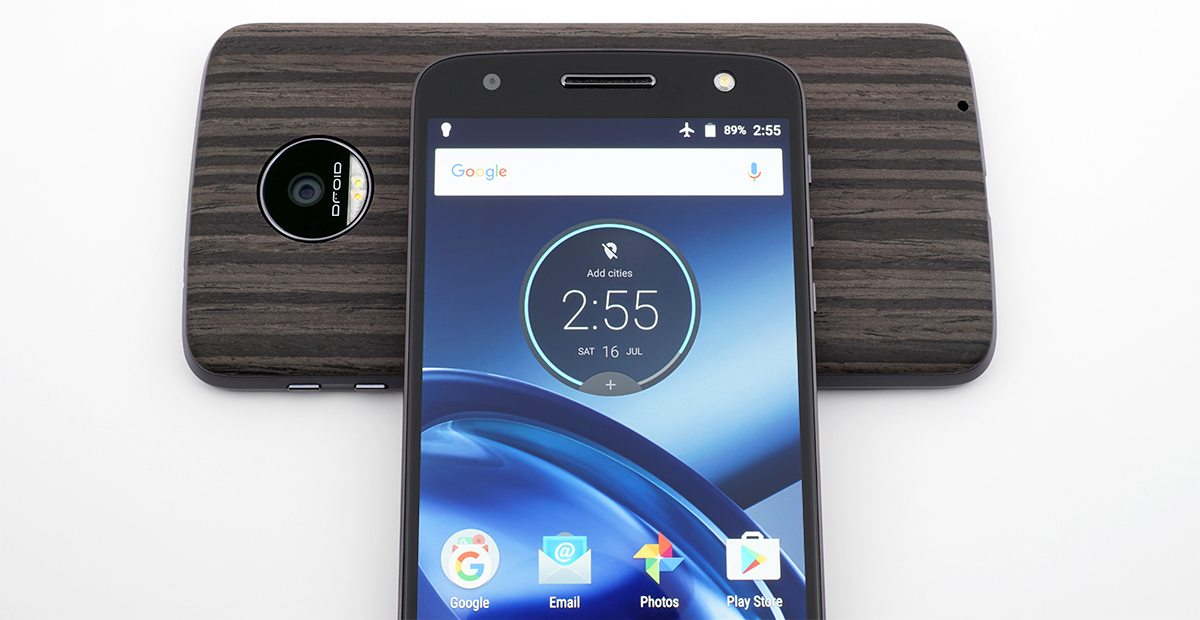The Motorola Moto Z & Moto Z Force (Droid Editions) Review
by Matt Humrick on July 28, 2016 8:00 AM EST
The relationship between Motorola and Verizon dates back to 2009 and the original Motorola Droid smartphone. Since then, the two companies have paired up for a number of Droid branded phones that are either only available from Verizon initially or are slightly tweaked models sold only by Verizon. When Motorola announced that the Moto Z and Moto Z Force will be replacing the Moto X family as the company's flagship devices at Lenovo’s Tech World event in June, it came as no surprise then that both phones would continue the Droid legacy and land exclusively on Verizon’s network first.
Unlocked versions of the Moto Z and Moto Z Force will be available directly from Motorola before the end of the year, but instead of waiting for the general release, we decided to go hands-on with Verizon’s Droid Editions, which use identical hardware.
| Motorola Moto Z Droid Family | ||
| Moto Z Droid | Moto Z Force Droid | |
| SoC | Qualcomm Snapdragon 820 (MSM8996) 2x Kryo @ 2.15GHz 2x Kryo @ 1.59GHz Adreno 530 @ 624MHz |
Qualcomm Snapdragon 820 (MSM8996) 2x Kryo @ 2.15GHz 2x Kryo @ 1.59GHz Adreno 530 @ 624MHz |
| RAM | 4GB LPDDR4-3188 | 4GB LPDDR4-3188 |
| NAND | 32GB / 64GB (UFS 2.0) + microSD |
32GB / 64GB (UFS 2.0) + microSD |
| Display | 5.5-inch 2560x1440 SAMOLED Corning Gorilla Glass |
5.5-inch 2560x1440 SAMOLED Moto ShatterShield |
| Dimensions | 153.3 x 75.3 x 5.19 mm 136 grams |
155.9 x 75.8 x 6.99 mm 163 grams |
| Modem | Qualcomm X12 (Integrated) 2G / 3G / 4G LTE (Category 12/13) |
Qualcomm X12 (Integrated) 2G / 3G / 4G LTE (Category 12/13) |
| SIM Size | NanoSIM | NanoSIM |
| Front Camera | 5MP, 1/4" OmniVision OV5693, 1.4µm pixels, f/2.2, Auto HDR, LED flash | 5MP, 1/4" OmniVision OV5693, 1.4µm pixels, f/2.2, Auto HDR, LED flash |
| Rear Camera | 13MP, 1/3.06" Sony IMX214 Exmor RS, 1.12µm pixels, f/1.8, Laser AF, OIS, Auto HDR, dual-color LED flash | 21MP, 1/2.4" Sony IMX338 Exmor RS, 1.12µm pixels, f/1.8, PDAF + Laser AF, OIS, Auto HDR, dual-color LED flash |
| Battery | 2600 mAh non-removable |
3500 mAh non-removable |
| Connectivity | 802.11a/b/g/n/ac 2x2 MIMO, BT 4.1 LE, NFC, GPS/GNSS, USB Type-C, Moto Mods connector | 802.11a/b/g/n/ac 2x2 MIMO, BT 4.1 LE, NFC, GPS/GNSS, USB Type-C, Moto Mods connector |
| Launch OS | Android 6.0.1 | Android 6.0.1 |
| Launch Price (No Contract) |
$624 ($26/mo) / $674 | $720 ($30/mo) / $770 |
Just like we’ve seen with most other flagship phones from this generation, the two Moto Z Droids come with Qualcomm's Snapdragon 820 SoC and 4GB of LPDDR4 RAM. Both models have either 32GB or 64GB of UFS 2.0 NAND, although the 64GB option is only available online through Motorola’s Moto Maker website. Internal storage can also be expanded with microSD cards. The Moto Z Droids have wireless connectivity covered with Qualcomm’s latest X12 baseband processor integrated into the SoC, Bluetooth 4.1 LE, NFC, and 802.11ac 2x2 MIMO Wi-Fi.
Unlike the Moto X phones, the Moto Z Droids come with a touch-based fingerprint sensor, a convenient security feature for unlocking the phone, authorizing purchases, and making mobile payments with Android Pay. So far I’ve found the new fingerprint sensor to be very reliable, unlocking the phone extremely quickly regardless of finger position. As with other capacitive sensors, it still has trouble with moisture and large changes in temperature, but its sensitivity to environmental factors is no worse than other solutions.
Neither of the Moto Z Droids support wireless charging, but they do include Motorola’s TurboPower fast-charging technology, which uses the included 15W or 30W chargers to provide up to 8 or 15 hours of battery life in just 15 minutes for the Moto Z Droid and Moto Z Force Droid, respectively, according to Motorola. Another shared feature is a water-repellant nano coating that protects the phones from accidental spills or light rain, but does not provide actual water or dust proofing like Samsung’s IP68 rated Galaxy S7.
While much of the internal hardware is the same, there are a few notable differences between the two models, the most significant being battery size. The Moto Z Droid comes with a 2600mAh battery, which is below the roughly 3000mAh average for phones with 5.5-inch displays. The Moto Z Force Droid bumps battery capacity to 3500mAh, which brings it close to the 3600mAh battery in Samsung’s Galaxy S7 edge. Differences in software and display efficiency will likely determine if the Force Droid can outlast the Galaxy S7 edge.
Both Moto Z Droids have the same 5MP front-facing camera with wide-angle lens that uses a dedicated LED flash and automatic HDR imaging to help capture selfies over a wider range of lighting conditions. The rear cameras both have large f/1.8 apertures and optical image stabilization to improve low-light image quality, but they use different sensors and autofocus systems. The Moto Z Droid includes a 13MP Sony sensor that pairs standard contrast-based autofocus with a laser to improve focus performance in low light. The Moto Z Force Droid uses a more advanced 21MP Sony sensor with deep trench isolation (DTI) technology for improved color fidelity. It also uses a hybrid autofocus system that combines laser, phase detection (PDAF), and contrast detection methods, which should provide faster, more reliable focusing performance in a variety of lighting conditions.
While the Moto Z Droid’s screen is covered edge to edge with Corning Gorilla Glass, the Moto Z Force Droid uses Motorola's second-generation Moto ShatterShield technology, a five-layer system that starts with an aluminum panel as a base to keep the 5.5-inch AMOLED screen from flexing. Two separate touch layers above the display provide redundancy in case one of the layers is damaged. A clear, flexible lens, likely made from a polycarbonate, is next. A second protective lens with a proprietary hardcoat completes the display stack. This assembly improves the screen's resistance to cracking or shattering if dropped, which Motorola backs by a four-year warranty.
The new Moto Z Droids’ specifications and hardware are impressive but not that much different than what’s currently available with other flagships. To make its new phones more enticing, Motorola made them modular. The idea of easily swappable accessories that extend a phone’s functionality shows promise but has not fully materialized—at least not yet. Will Motorola’s Moto Z and its modular accessories, called Moto Mods, prove useful or will they just be another wacky idea that goes nowhere?












75 Comments
View All Comments
Daving - Thursday, July 28, 2016 - link
There's nothing stopping you from skipping right to it?ToTTenTranz - Thursday, July 28, 2016 - link
Is there a HTC 10 review still coming up?I'm wondering because it's been so long that by now, everyone who was wondering what 2016 flagship smartphone to buy has probably done so already.
You guys have had the smartphone for 3 and a half months. The Moto Z models in this review were announced 2 months after you already had the HTC 10 with you.
Did you give up on the review?
grayson_carr - Thursday, July 28, 2016 - link
Sorry, I've only made it to the spec table, but had to rant already. Why did Motorola put an IMX214, a camera sensor from 2 years ago that was mediocre when it was released 2 years ago, a camera sensor from the OnePlus One and Nexus 6, into a $620 phone in 2016??? Cheap bastards!!! What a rip off.mortimerr - Thursday, July 28, 2016 - link
For the same reason they put in the same size battery as a Samsung S4. As far as I can tell, to make people spend more on the Force Z or buy a mod to make up for all of the compromises. This may be one of the worst $600+ devices out right now.Veteater - Friday, July 29, 2016 - link
That must be a misprint. The Z actually has an IMX278, not an IMX214.chief-worminger - Friday, July 29, 2016 - link
Please can you give a source? Googling it hasn't helped and Motorola's website doesn't give any info on the actual sensor used. @Matt Humrick, do you know?Matt Humrick - Friday, July 29, 2016 - link
The Moto Z's system files list IMX338 (confirmed by Motorola) and IMX214 as the rear camera sensors. Further digging revealed no additional info. What's the source for IMX278?The purple fringing and loss of sharpness in the corners I see on the Moto Z, which I do not see on the Moto Z Force, are caused by the lens array and software processing rather than the sensor anyway.
Veteater - Monday, August 1, 2016 - link
I would think it would make more sense for the phone to have an IMX278, but it could have either or...So, compared to $600+ flagships as well as phones like, say, the OnePlus 3 or something of that nature, just how good is the standard Z's camera? The force has one of the best cameras in the business.
grayson_carr - Thursday, July 28, 2016 - link
I like that both the standard and vibrant display modes were tested! Nice to see that data!grayson_carr - Thursday, July 28, 2016 - link
If there was an unlocked Moto Z Force with a normal gorilla glass display, I would buy the hell out of it. Heck, if the Force just had a normal display, I might buy the Verizon version even though I'm on AT&T. I noticed the shimmery appearance of the Force display in store though and didn't like it. Not to mention I am more worried about scratches than shatters as I never drop and shatter my screens.